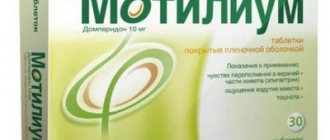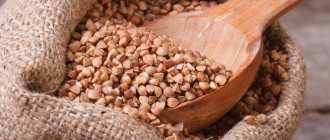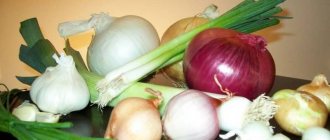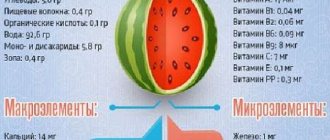Fruit juice is a product that is obtained by squeezing ripe fruits.
It is no secret that fresh fruits are the main source of vitamins and other useful chemical compounds. However, it is usually not possible to eat them in the amount necessary to cover the daily requirement for these substances. In this case, fruit juices become a “lifesaver.” They contain all the beneficial components in higher concentrations and are better absorbed than whole fruits.
Life-giving nectar or hidden threat?
Dosed consumption of freshly squeezed juices is of great importance for maintaining health. Even the term “juice therapy” was coined, which implies the therapeutic effect of such drinks on the body:
- stimulation of immunity;
- regulation of the digestive tract, heart and blood vessels;
- normalization of metabolism and energy;
- strengthening the vascular wall;
- activation of hematopoiesis and regeneration processes;
- fight against microbes;
- removal of free radicals;
- anti-inflammatory effect.
All of the listed characteristics are not the same for different types of fruit and depend on their qualitative composition. However, not everything is as rosy as it seems at first glance. Excessive consumption of fruit juices carries certain risks:
- the likelihood of developing diabetes and cardiovascular diseases increases;
- liver function is impaired;
- body weight increases;
- the physical development of children slows down.
This is primarily due to the high concentration of fast carbohydrates in the juice. They are the “culprits” of type 2 diabetes, hypertension and obesity. For children, excess sugary drinks are dangerous due to increased production of insulin, which suppresses growth hormone. And with the simultaneous consumption of freshly squeezed fruit juices and certain medications, liver failure may develop: liver enzymes primarily process substances of natural origin, and medicinal components accumulate and poison the body.
Note! Such juices that are dangerous for the liver include cranberry and grapefruit. If you are taking any medications for chronic diseases, consult your doctor before consuming fresh juices. He will tell you how compatible medicinal and natural substances are.
All of the negative aspects listed are not a reason to completely abandon juices, but only an incentive to drink them in moderation and not to forget about wholesome fruits, rich in fiber and not too sweet.
Which drink to choose when you are sick?
During an acute period of stomach inflammation, it is better to avoid fruit drinks.
Their stimulating effect will not benefit the diseased organ. If a diagnosis of hyperacid gastritis has been established, most juices are contraindicated. This is due to their high content of organic acids, which further reduce the pH. In addition, fresh juices activate the synthesis of hydrochloric acid, and the mucous membrane of the organ is subjected to an even more serious attack by the aggressive gastric environment.
The exceptions are pineapple, birch, and banana juice - they lower acidity levels. Cherry, apple and pear drinks are considered relatively safe, provided that the pears and apples are of sweet varieties (“conference”, “white filling”).
For hypoacid and atrophic gastritis, most fresh juices can be consumed without exacerbation. They are even useful: by increasing the production of digestive juices, they prevent fermentation and rotting in the stomach. Some fruits irritate the lining of the stomach (for example, grapes). They are not allowed to be consumed every day and in small quantities.
Important! To determine the type of acidity, consult a doctor and undergo the necessary examination. All folk methods like “eat a piece of lemon without wincing” reflect only the sensitivity of taste buds and are in no way related to the state of gastric juice. Only a specialist can make an accurate diagnosis.
The list of fruits recommended for erosive gastritis is small. You can easily eat bananas, from which it is quite difficult to obtain real liquid juice. Usually a thick, concentrated drink with pulp is prepared, enveloping the walls of the stomach and neutralizing the effect of hydrochloric acid. Birch sap is also safe and can be drunk in any quantity.
For gastritis with low acidity
In this case, preference is given to pineapple, apple, tomato, cherry and currant juices.
Drinks improve digestion and prevent fermentation in the stomach and intestines. This prevents the progression of pathology and the appearance of other gastrointestinal diseases. Information sources:
V. T. Ivashkin, V. P. Shevchenko - Nutrition for diseases of the digestive system - source A. Nesterov - Therapeutic nutrition for chronic gastritis - source A. M. Kiseleva, O. V. Nesterova, Biryukova N. V. - Nutrition and comparison of diets for gastritis - source B. Kaganov, Kh. Sharafetdinov - Medical nutrition for chronic diseases - source A. Tolstykh - Dietary nutrition for diseases of the gastrointestinal tract - source S. Kh. Mironova, E. S. Kovalevskaya - Gastritis and therapeutic physical education for gastritis - source F. Moutier, A. Cornet - Gastritis. - source CS Heo, JJ Lee, YJ Baek, HS Kim - Food containing active strains for inhibiting infection and treating gastritis, gastric and duodenal ulcers - source
You have to know how to drink
And now we mean exclusively fruit juices. Gastroenterologists usually give several important rules for drinking juices for patients with inflammation of the stomach:
- It is better to drink fresh juice on an empty stomach, about half an hour before meals.
- The healthiest juice is freshly prepared. The longer it is stored (even in the refrigerator), the more valuable components it loses.
- Do not drink drinks that are too cold; warm them to room temperature first.
- It is advisable to dilute the juice by half with water, this is especially important for diseases of the pancreas.
- After concentrated acidic drinks, it is better to rinse your mouth with drinking water, otherwise there is a risk of damaging tooth enamel.
Read more about the very best
Let's look separately at the most popular types of juices in our country and figure out how they affect digestion.
Tomato
There is a wide variety of tomato-based drinks.
They add salt, sugar, spices, prepare them using tomato paste, and boil them. Unfortunately, such experiments can seriously harm patients with gastritis. Firstly, drinking tomato juice is permissible only with hypoacid inflammation, and even then no more than 300 g per day.
Secondly, it should be a drink made from fresh tomatoes without any extraneous additives. Salt and spices irritate the gastric mucosa. As a last resort, it is allowed to add chopped parsley and dill to the tomatoes.
Helpful information . Tomato juice is considered the most dietary. 100 g of product contains 17 kcal and 3% carbohydrates. For comparison: the calorie content of 100 g of fresh fruit or berries is 40-60 kcal, and the sugar content is 10-15%.
Pomegranate
Pomegranates are rich in vitamin C and microelements that improve the functioning of the heart and blood vessels. These fruits are traditionally recommended for patients with anemia to increase hemoglobin levels in the blood. The only undesirable effect of pomegranate juice is acidification of gastric contents. For patients with hyperacid gastritis, this fruit is prohibited. But with low acidity, pomegranate juice prevents rotting processes in the stomach and stimulates the digestion of food.
Apple
Apple-based drinks are rich in antioxidants that suppress the formation of free radicals and slow down the aging process.
However, “rejuvenating” apples usually increase the acidity of gastric juice. To a lesser extent this applies to sweet fruits. Therefore, with hyperacid gastritis, apple juice can be drunk only during a period of stable remission, squeezed from sweet fruits and diluted with water before use.
Grape
In terms of vitamin content, grapes are inferior to many other fruit crops, but they lead in manganese concentration. This microelement stimulates hematopoiesis and tissue regeneration. White grape varieties contain more iron, so they are used in the treatment of iron deficiency anemia. But dark varieties are characterized by high antioxidant activity.
Unfortunately, the irritating effect of the fruit on the gastric mucosa imposes serious restrictions on the consumption of drinks based on it. They are permissible only for hypoacid gastritis in a volume not exceeding 50 ml per day. It is better to dilute grape juice with water.
Orange
This is a drink with anti-inflammatory, immunostimulating, antioxidant, antiviral properties.
Like other citrus fruits, orange juice is prohibited if the pH level of gastric juice is low and the presence of erosions and ulcers is present. In hypoacid conditions, it is allowed to drink only during the period of remission, in small quantities. It is permissible to drink 300 ml of the product per day, divided into 2-3 doses.
Multifruit
Combined fruit juices are not only tasty, but often more harmless than “pure” fresh juices. For example, a mixture of one of the acidic juices (citrus, pomegranate, peach) with pineapple, banana, aloe juice can be drunk even in hyperacid conditions. But you shouldn’t combine several types of sour drinks, they irritate the stomach too much.
Birch
Perhaps this is the only juice that can be consumed without restrictions for any form of gastritis. True, it is conditionally classified as “fruit”. Birch sap is a liquid that flows from a broken part of a tree under the influence of root pressure. In fact, the plant itself feeds on this composition, so the concentration of nutrients in the drink is very high. Be sure to store it in the refrigerator for no longer than 2 days.
General information about gastritis
Gastritis is an inflammatory disease of the mucous membranes of the stomach, which may be accompanied by dystrophic changes. The pathology most often occurs in a chronic form. It gradually develops and entails a deterioration in the patient’s quality of life due to digestive disorders. However, with timely treatment, it is possible to minimize or completely eliminate all manifestations of the disease.
Reasons for appearance
Gastritis develops for reasons such as:
With an excess of smoked foods, gastritis develops.
- Malfunction of the immune system. If the body attacks its own cells in the lining of the stomach, they become inflamed. As a result, an autoimmune form of gastritis develops, which is characterized by a severe course with a concomitant violation of the absorption of vitamin B12.
- Infection. In most cases, the occurrence of the disease is associated with the activity of Helicobacter pylori bacteria. After entering the body, they penetrate the protective layer of the stomach and attach to the epithelial membranes. During their life, bacteria release toxins that irritate tissues.
- Aggressive effects of bile. It develops with reflux, which is accompanied by the reflux of bile-pancreatic juice from the duodenum into the stomach. Acids negatively affect the epithelial membranes, which leads to inflammation.
- Bad habits. People who do not pay enough attention to their diet are at risk. The danger comes from snacking on the go, prolonged fasting, frequent overeating, too long breaks between meals, etc. The risk of developing gastritis increases with an excess of smoked, spicy, fatty, fried foods on the menu. The disease can occur with alcohol and cigarette abuse.
- Pathologies of the oral cavity. The risk of developing gastritis increases with malocclusion, missing teeth and caries.
- Parasitic infestations. Helminths damage the internal membranes and release toxins during their life processes. This leads to tissue irritation.
- Taking medications. Non-steroidal anti-inflammatory drugs, corticosteroids and aspirin-based medications are dangerous.
- Psychological disorders. The risk of developing the disease increases due to overexertion, stress and depression.
Symptoms and signs
Gastritis has vague, nonspecific symptoms, often occurs without pronounced symptoms, and causes severe discomfort only during exacerbations. Patients complain of discomfort in the abdomen, bloating, and heartburn. Patients often experience nausea, bowel movements and belching of air. Gastritis is characterized by a weakening of symptoms after eating.
On store shelves
Above we talked mainly about freshly squeezed juices. The products offered by the food industry, as a rule, bear little resemblance to them. On supermarket shelves we can see the following products:
- Directly pressed juice. It is prepared from natural fruits, pasteurized and packaged in glass containers or aseptic bags.
- Reconstituted juices . First, for ease of storage and transportation, a concentrate is prepared by evaporating the liquid from the natural juice. Then it is restored with the same volume of water and put on sale.
- Nectars. They are prepared in the same way, but diluted with more water. The concentration of natural juice in nectar is 25-50%.
- Juice drinks contain even less of it - from 6 to 25%.
Of all the listed products, a patient with gastritis can safely drink only a directly pressed drink if it does not contain any extraneous additives. The remaining options are useless at best, and harmful at worst - they are generously flavored with sugar, flavorings, preservatives, and citric acid.
Juices that can be consumed when sick
The list of permitted juices depends on the form of the disease. With high acidity, drinks are prepared from products that neutralize aggressive substances. At low levels, juices help eliminate rotting processes and speed up the digestion of food.
The list of permitted juices may vary.
What to make from juice
Juices can not only be drunk, but also eaten as part of delicious dietary dishes and desserts. Let's share a couple of interesting recipes that are allowed for any type of gastritis.
Cherry eggnog
You will need:
- 2 chicken eggs;
- 2 glasses of skim milk;
- 3 tbsp. l. granulated sugar;
- 1 pinch of salt;
- 1 glass of cherry juice;
- ½ glass of water.
Preparation:
- We break them and separate the whites from the yolks.
- Beat the yolks with salt and granulated sugar.
- Add them to the cooled milk, add water, and whisk everything again.
- Add cherry juice and mix well.
- Separately, beat the whites until they form a thick foam.
- Pour in the mixture with the yolk, stir gently and serve.
Creamy fruit soufflé
You will need:
- 500 ml natural low-fat yogurt;
- 300 ml low-fat cream;
- 150 ml sweet apple juice;
- 30 g gelatin;
- 2 tbsp. l. powdered sugar.
Preparation:
- Whip cream with powdered sugar.
- Dissolve gelatin in juice at room temperature.
- Add yogurt and cream there and beat well.
- Place the mixture in molds and place in the refrigerator overnight.
- In the morning, the soufflé can be served.











